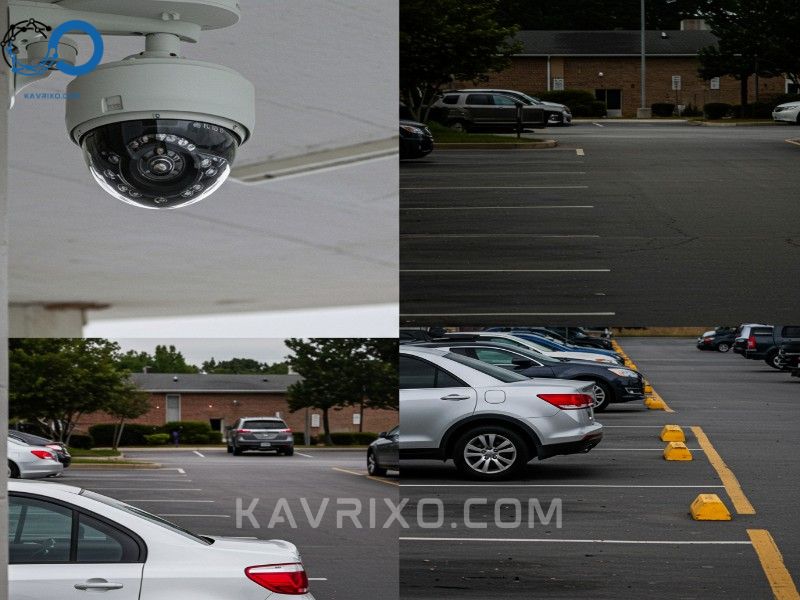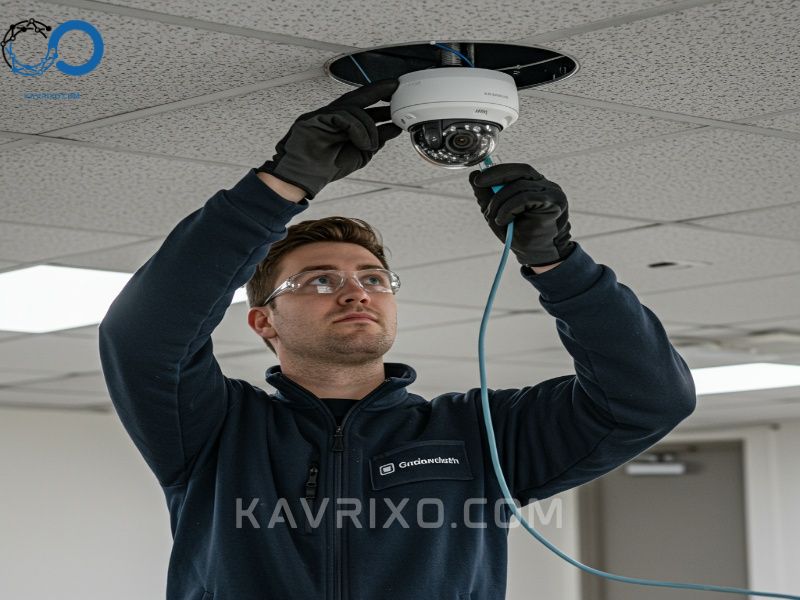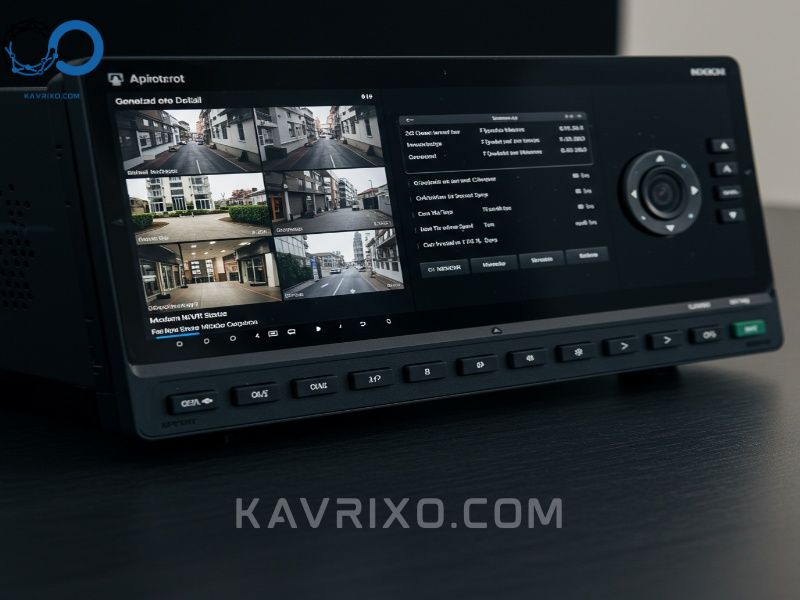The decision to install a security monitoring system is no longer a luxury; it’s a necessity. However, navigating the overwhelming landscape of modern security technology—from traditional analog systems to cutting-edge cloud-based IP cameras—can feel like trying to solve a complex puzzle. Without a detailed, structured video surveillance comparison, consumers and businesses often end up with a mismatched system that fails to meet their specific needs, either overspending on features they won’t use or under-protecting critical assets.
This comprehensive guide is designed to cut through the noise. We will meticulously examine the key architectural differences, technical specifications, and smart integration capabilities required to make a truly informed choice. Whether your goal is to secure a small apartment using wireless technology or deploy a robust, scalable system across a large commercial property, understanding these comparisons is the crucial first step toward selecting the optimal security solution.
Contents
- 1 Why a Detailed Video Surveillance Comparison is Crucial Today
- 2 Wired vs. Wireless: A Fundamental Compare CCTV Camera Deep Dive
- 3 Key Technical Specifications for Comparison
- 4 Focus on Premium Smart Cameras for Home Automation
- 5 Storage and Accessibility Comparison: Local NVR/DVR vs. Cloud-Based Solutions
- 6 Installation, Maintenance, and Scalability
- 7 Making Your Final Informed Decision
Why a Detailed Video Surveillance Comparison is Crucial Today
Security technology evolves at a rapid pace. What was considered “high-definition” five years ago is now standard, and advanced features like AI-driven analytics are moving from enterprise-only solutions into consumer-grade cameras. This saturation of options means that simple price comparison websites are insufficient. A proper video surveillance comparison requires evaluating long-term costs, scalability, privacy implications, and system interoperability.
For instance, a homeowner focused solely on resolution might select a high-megapixel camera that requires excessive bandwidth, crippling their home network. Conversely, a business might prioritize cheap storage, only to discover their footage is unreliable during a critical incident. Success hinges on balancing performance, cost, and complexity based on the environment being monitored.
The Evolving Landscape of Security Technology
Historically, security relied almost entirely on closed-circuit television (CCTV) systems—bulky, wired setups requiring dedicated recording devices (DVRs). While these systems still exist, the market is now dominated by internet protocol (IP) cameras. IP technology allows for higher resolution, digital signal transmission, Power over Ethernet (PoE), and, most importantly, integration with broader Internet of Things (IoT) and smart home ecosystems. Understanding this shift is vital when you need to compare CCTV camera systems against their modern IP counterparts.
Wired vs. Wireless: A Fundamental Compare CCTV Camera Deep Dive
The starting point for any video surveillance comparison is the infrastructure: how the camera connects and transmits data. This choice dictates the installation complexity, reliability, and maximum achievable performance.
Analyzing Analog (CCTV/HD-TVI) Systems
Traditional analog systems, often the first technology people reference when they compare CCTV camera options, use coaxial cables (BNC connectors) to transmit video signals to a Digital Video Recorder (DVR).
Pros:
* Simplicity and Cost: Installation can be straightforward (especially replacing existing systems), and individual cameras are often cheaper upfront.
* Reliability: Since data is transmitted directly over dedicated cables, these systems are less susceptible to network interference or WiFi saturation issues.
Cons:
* Resolution Limits: While modern analog systems (like HD-TVI or CVI) can push up to 4K resolution, the signal quality often degrades over long cable runs.
* Lack of Intelligence: Processing usually happens at the DVR, meaning cameras themselves lack built-in analytics or advanced smart features.
* Cabling: Requires two cables per camera (power and video), significantly increasing installation effort compared to PoE.
Understanding Network (IP) Systems
IP systems, using standard Ethernet cable (Cat5e/Cat6) and connecting to a Network Video Recorder (NVR) or cloud storage, are the industry standard for high-performance installations.
Pros:
* Superior Resolution and Detail: IP cameras consistently offer higher resolution (up to 12MP or more) and better digital zoom capabilities.
* Power over Ethernet (PoE): A single Ethernet cable provides both power and data, drastically simplifying wiring and reducing installation costs.
* Distributed Intelligence: Many IP cameras have powerful processors, enabling advanced on-camera analytics (e.g., license plate recognition, facial detection) before the data even hits the recorder.
* Scalability: Systems can be easily expanded by adding cameras to the existing network infrastructure.
Cons:
* Network Dependency: Requires robust network management. Poor configuration can lead to latency, dropped frames, or network overload.
* Higher Initial Cost: IP cameras and NVRs are generally more expensive than their analog counterparts.

The Hybrid Approach (HD-over-Coax)
A middle-ground solution exists for those transitioning from older systems. HD-over-Coax allows high-definition video transmission over existing coaxial cabling. This is perfect for users who want to upgrade their resolution without the massive expense and disruption of rewiring an entire building with Ethernet. While convenient, it still limits the cutting-edge smart features associated with pure IP systems.
Key Technical Specifications for Comparison
When analyzing different cameras during your video surveillance comparison, looking solely at the marketing claims is insufficient. You must understand the underlying technical metrics that define performance in real-world conditions.
Resolution and Field of View (FoV)
Resolution (measured in megapixels, MP) dictates the clarity and detail of the image.
- 1080p (2MP): Standard for basic monitoring, suitable for general viewing but often insufficient for clear identification at a distance.
- 4K (8MP): Provides forensic quality detail, essential for large areas like parking lots or retail floors where high-definition zoom is necessary.
However, resolution must be balanced with the Field of View (FoV). A wide FoV (e.g., 180 degrees) covers more area but spreads the available pixels thinner, potentially reducing the identification detail compared to a narrow FoV camera aimed specifically at a choke point (like a doorway).
Low-Light Performance and IR Capabilities
Most incidents happen under poor lighting conditions. Low-light performance is measured in Lux (the intensity of light). A camera with a lower Lux rating performs better in dim environments.
- Infrared (IR): IR LEDs illuminate the scene in total darkness, rendering a black-and-white image. Compare the IR range (measured in feet/meters) to ensure it covers the area you need.
- Color Night Vision (Starlight/ColorVu): Premium cameras use larger sensors and advanced processing (sometimes coupled with subtle white light) to maintain color images even in near-darkness. This is a crucial feature for identification, as color information (like clothing or vehicle color) is often lost in standard IR footage.
Frame Rate (FPS) and Motion Clarity
Frame Rate Per Second (FPS) determines how smooth the video footage is.
- 15 FPS: Generally acceptable for monitoring fixed, low-traffic areas.
- 30 FPS (Real-Time): Essential for areas with high traffic, like entrances or roads, where capturing fast-moving objects (people running, cars driving) clearly is necessary for evidence.
A low frame rate during a fast-moving event can result in motion blur, rendering the footage useless for forensic investigation.
Bandwidth Consumption and Storage Needs
Higher resolution and frame rates consume significantly more bandwidth and storage capacity. This is where compression standards become critical.
- H.264: The older, more common compression standard. Efficient but bandwidth-intensive at high resolutions.
- H.265 (HEVC): The modern standard, offering up to 50% reduction in bandwidth and storage requirements compared to H.264 without sacrificing image quality. When performing a video surveillance comparison, always prioritize H.265 or H.265+ capable systems, especially if you are deploying multiple 4K cameras.

Focus on Premium Smart Cameras for Home Automation
The rise of the smart home has profoundly changed the surveillance market. Modern consumers are not just looking for passive recording; they want active, integrated security that communicates with other devices, triggers actions, and learns from its environment. This is the domain of premium smart cameras for home automation.
Advanced AI Features (Facial Recognition, Object Detection)
The greatest pain point of traditional CCTV is the sheer volume of false alerts (a tree swaying, a shadow moving). AI eliminates this by performing real-time analysis on the video feed.
- Person/Vehicle Detection: Distinguishing between humans, pets, and vehicles drastically reduces false notifications.
- Facial Recognition: Used for access control or notifying homeowners when specific family members arrive.
- Area Protection: Setting virtual tripwires or intrusion zones that only trigger an alert if a human or vehicle crosses them.
These advanced features significantly enhance the usability of a system and are hallmarks of premium smart cameras for home automation. They move the system from being a mere recorder to an intelligent, proactive guardian.
Seamless Integration Protocols (Zigbee, Z-Wave, Matter)
For a truly unified smart home, security devices must communicate seamlessly with lighting, locks, and climate control.
| Protocol | Primary Use in Security | Integration Benefit |
| Wi-Fi | High-bandwidth video streaming | Easy setup, but often lacks deep automation control. |
| Zigbee/Z-Wave | Low-power sensors, door contacts, locks | Creates mesh networks for reliable communication; ideal for low-bandwidth actions (e.g., locking doors when the camera detects the last person leaving). |
| Matter | Emerging universal standard | Aims to allow all certified devices (regardless of brand) to work together seamlessly, future-proofing security investments. |
If you plan to use your security system to trigger lights when motion is detected, or automatically arm the system when you lock the smart door, checking for compatibility with these integration protocols is non-negotiable.
Privacy and Data Security Considerations
As security systems become smarter and more connected, privacy becomes paramount. When selecting premium smart cameras for home automation, consider:
- End-to-End Encryption (E2EE): Does the camera encrypt the video data before it leaves the device and keep it encrypted until it reaches your viewing app?
- Local Processing: Does the AI analysis happen on the camera itself (edge computing) or is all data sent to the cloud for processing? Local processing is faster and generally more secure, as sensitive data never leaves your network.
- Cloud Hosting Location: Where are the servers located? Data laws vary significantly by country, impacting who can access your video footage under what circumstances.

Storage and Accessibility Comparison: Local NVR/DVR vs. Cloud-Based Solutions
Where your video footage is stored is arguably as important as the quality of the image itself. The storage method affects cost, accessibility, security, and data retention.
Local Storage (NVR/DVR)
Local storage involves keeping all footage on hard drives physically located on your premises.
Pros:
* Ownership and Control: You own the data and control access entirely. No reliance on external servers.
* No Recurring Fees: After the initial hardware purchase (hard drives), there are no monthly subscription costs.
* Faster Access: Retrieval of footage is instantaneous over the local network.
Cons:
* Vulnerability: The NVR/DVR is a single point of failure. If the device is stolen or destroyed (e.g., in a fire), the footage is lost.
* Maintenance: Requires occasional maintenance, including hard drive replacement and software updates.
Cloud-Based Solutions
Cloud storage involves uploading footage to secure remote servers via the internet.
Pros:
* Accessibility: View and manage footage from anywhere in the world with an internet connection.
* Off-Site Security: Footage is safe even if the cameras or property are compromised.
* Automatic Updates: System maintenance and software updates are handled by the provider.
Cons:
* Recurring Costs: Requires monthly or annual subscription fees, which can quickly exceed the initial cost of the hardware over several years.
* Internet Dependency: If the internet connection fails, recording is often interrupted (unless the camera has a local backup buffer).
* Data Upload Speed: High-resolution footage requires significant upstream bandwidth, which can impact overall network performance.
Cost Analysis of Cloud Subscriptions
When performing a long-term video surveillance comparison, always calculate the 3-year or 5-year total cost of ownership (TCO) for cloud systems. A camera that costs $50 upfront but requires a $10/month subscription for basic features will cost $410 over three years. A robust local NVR system might cost $800 upfront but have $0 recurring fees, making it cheaper in the long run for multi-camera setups.
Reliability and Data Retention Policies
Examine the data retention policies carefully. Some providers only offer 7 days of rolling footage, while commercial needs often mandate 30, 60, or 90 days of continuous recording. Ensure the service level agreement (SLA) guarantees uptime and data integrity, especially critical for business use.

Installation, Maintenance, and Scalability
The best system on paper is only as good as its installation. Practical factors like wiring, setup ease, and long-term maintenance needs must be factored into any effective video surveillance comparison.
DIY vs. Professional Installation Costs
| Factor | DIY (Do-It-Yourself) | Professional Installation |
| System Type | Wireless or simple PoE kits | Complex wired, multi-building, or hybrid setups |
| Initial Cost | Low (cost of hardware only) | High (labor fees often exceed hardware costs) |
| Expertise | Requires basic networking and electrical knowledge | Ensures optimal camera placement, precise wiring, and guaranteed network configuration |
| Time Investment | Significant, especially for running cables | Minimal time commitment for the end-user |
For large-scale or complex installations (e.g., businesses that must adhere to specific fire codes or run cables through difficult structures), professional installation is usually non-negotiable to ensure compliance and reliability.
Warranties and Customer Support
Security systems are investments that should last 5-10 years. A strong warranty (typically 2-3 years for cameras and NVRs) indicates manufacturer confidence. More crucial, especially for advanced systems featuring premium smart cameras for home automation, is the quality of customer support. Can you get technical help quickly if a complex networking issue arises? Poor support can turn a minor technical glitch into a major security vulnerability.
Future-Proofing Your Security Investment
Technology marches on. When selecting a system, consider its ability to integrate future advancements:
- Open Standards: Does the system support ONVIF (Open Network Video Interface Forum)? This international standard ensures that cameras from one manufacturer can communicate with recorders from another, preventing vendor lock-in.
- Cable Infrastructure: If installing a wired system, always use Cat6 cable instead of Cat5e. Cat6 supports higher bandwidth and speeds (10 Gigabit Ethernet), ensuring your wiring infrastructure can handle future 8K or 12K cameras without needing replacement.
- Software Updates: Does the manufacturer have a history of regularly updating firmware to patch vulnerabilities and introduce new features? A company that stops supporting its hardware after two years leaves you with an obsolete and potentially insecure system.

Making Your Final Informed Decision
Choosing the right security monitoring system boils down to matching technology to your threat profile and usage environment. The ultimate video surveillance comparison requires answering three fundamental questions:
- What is my primary goal? (Deterrence, identification, monitoring general activity, or remote property management?)
- What is my environment? (Small, easy-to-wire home; large commercial space requiring long cable runs; rural property with poor internet?)
- What is my long-term budget? (Do I prefer higher upfront costs with zero recurring fees, or lower upfront costs offset by monthly subscriptions?)
For those needing forensic detail, seamless integration, and advanced analytics, the investment in high-end IP cameras and premium smart cameras for home automation is justified. If simplicity, cost-effectiveness, and local control are paramount, a modern, high-definition local NVR system provides exceptional value.
By diligently comparing the architecture, technical specs, storage costs, and integration potential, you move beyond simple product shopping and invest in a comprehensive, reliable security infrastructure tailored precisely to your needs.

